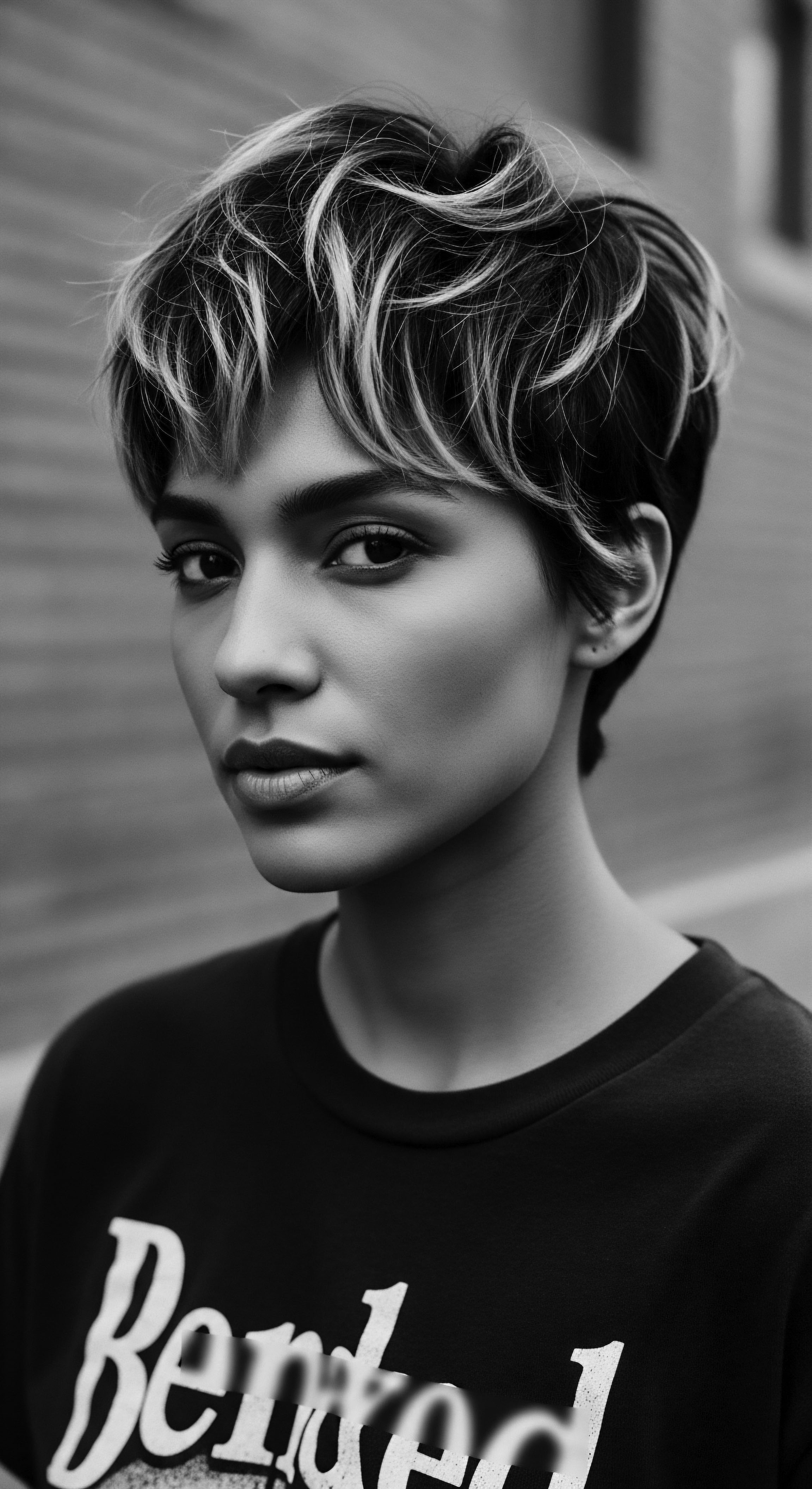
Roots
Consider your hair, not merely as a collection of strands, but as a living lineage, an archive of ancestral ingenuity. For those whose hair coils and bends in myriad ways, whose scalp hosts a garden of unique textures, this contemplation takes on a particular resonance. The inquiry into how the very specific structure of textured hair can draw strength from the deep well of heritage knowledge is an invitation to listen closely to the whispers of time, to the hands that first knew these patterns, and to the practices that kept them vibrant across generations.
Each curl, each wave, each intricate coil holds a story, a biological testament to resilience and adaptation, mirrored in the enduring wisdom of our forebears. Our journey together honors the profound connection between the biological makeup of textured hair and the collective ancestral practices that have always sought to protect, adorn, and celebrate it.
The unique architecture of Afro-textured hair, characterized by its helical shape and elliptical cross-section, distinguishes it from other hair types. This inherent structure, while providing inherent strength and a certain protective quality against ultraviolet radiation as an evolutionary adaptation, also presents specific needs for care. The tightly wound nature of these strands means more points where the cuticle is exposed, leading to greater susceptibility to dryness and potential breakage if not properly tended. Scientific understanding now affirms what our ancestors intuitively knew ❉ moisture retention is paramount, and gentle handling is a golden rule for these distinctive strands.
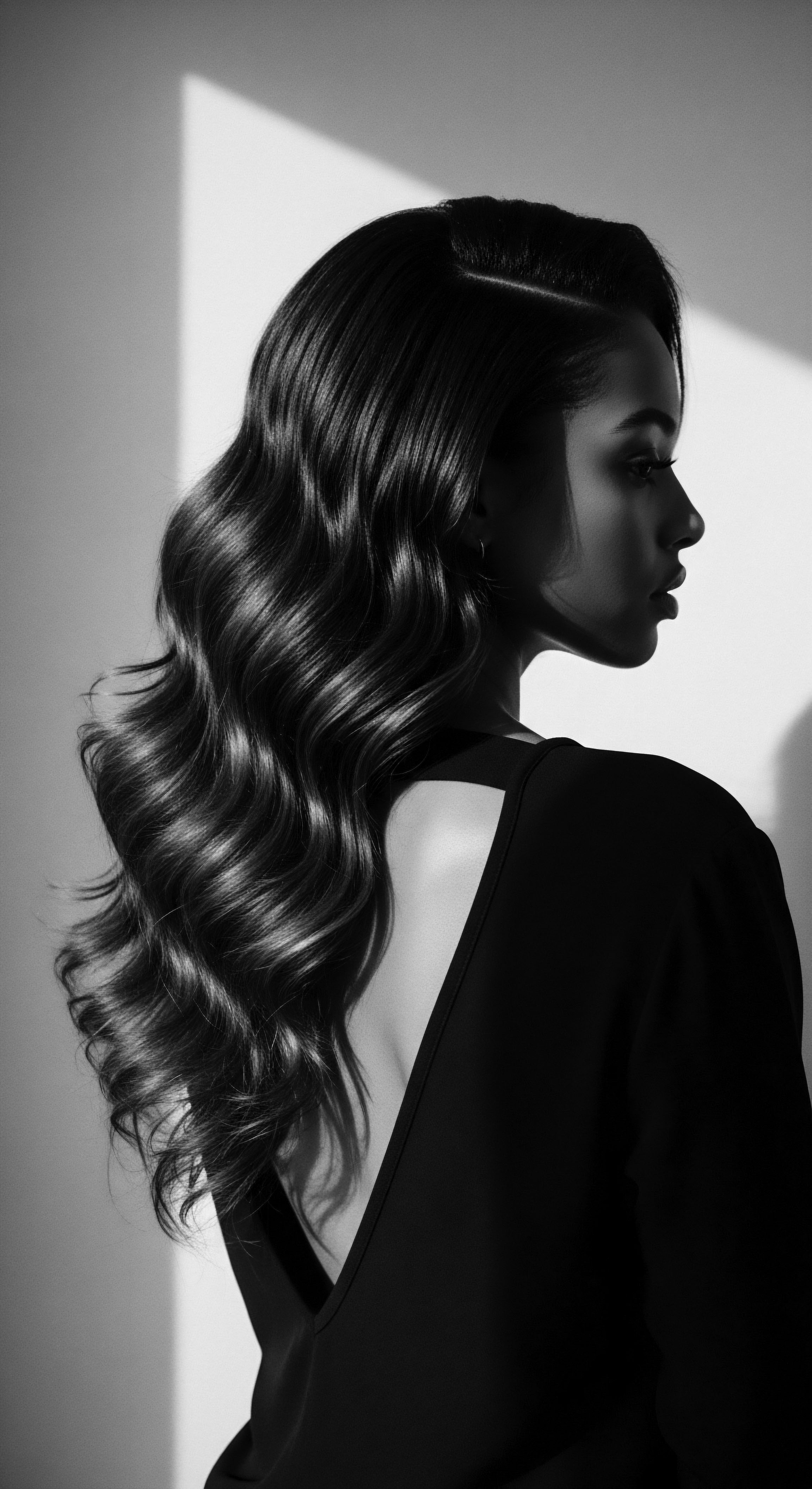
Anatomy of Ancestral Strands
The follicle, the birthplace of each strand, angles differently within the scalp for textured hair, contributing to its distinctive curl pattern. This biological blueprint, passed down through countless generations, defines how hair emerges, spins, and shapes itself. Ancient African societies, with their acute observations, might not have articulated this in microscopic terms, yet their methods for care demonstrate a profound, practical understanding of this inherent physical reality. They discerned that the hair’s very design called for particular attention to its thirst and its vulnerability at points of curvature.
The physical blueprint of textured hair, with its unique follicular angle and coil pattern, always found its complement in ancestral care practices.
The lexicon used to describe textured hair, particularly within Black and mixed-race communities, has often been a reflection of societal perspectives, both affirming and demeaning. Terms that once sought to diminish, describing hair as “wooly” or “nappy,” have been reclaimed through cultural movements, transforming into symbols of pride. The language itself becomes a living testament to heritage, reflecting a journey from imposed derogation to self-defined beauty. This evolution in descriptive terms speaks to the deep cultural significance of hair beyond its biological form.

Hair’s Earliest Classifications
Before modern classification systems, which themselves carry historical biases originating from attempts to categorize human populations based on physical traits, hair in pre-colonial Africa functioned as a powerful social communicator. Hairstyles conveyed marital status, age, wealth, ethnic identity, and even social rank. This intricate system of visual communication, predating written records in many instances, speaks to a heritage where hair was a dynamic canvas for identity, far beyond mere aesthetics.
- Social Status ❉ In many African communities, well-groomed hair indicated a respected social position, often signifying wealth or leadership.
- Tribal Affiliation ❉ Specific braiding patterns or adornments could immediately identify an individual’s community or lineage.
- Life Events ❉ Hairstyles marked significant life passages such as initiation into adulthood, marriage, or periods of mourning.
Consider the ancient Egyptians, for example, whose reverence for hair was evident in elaborate styles and the use of specialized tools and products. Queen Tiye, depicted with an Afro-style crown, demonstrates how textured hair was celebrated at the highest echelons of society. These historical records provide a powerful counter-narrative to later colonial impositions that sought to denigrate Afro-textured hair, revealing a heritage of honor and intricate care.
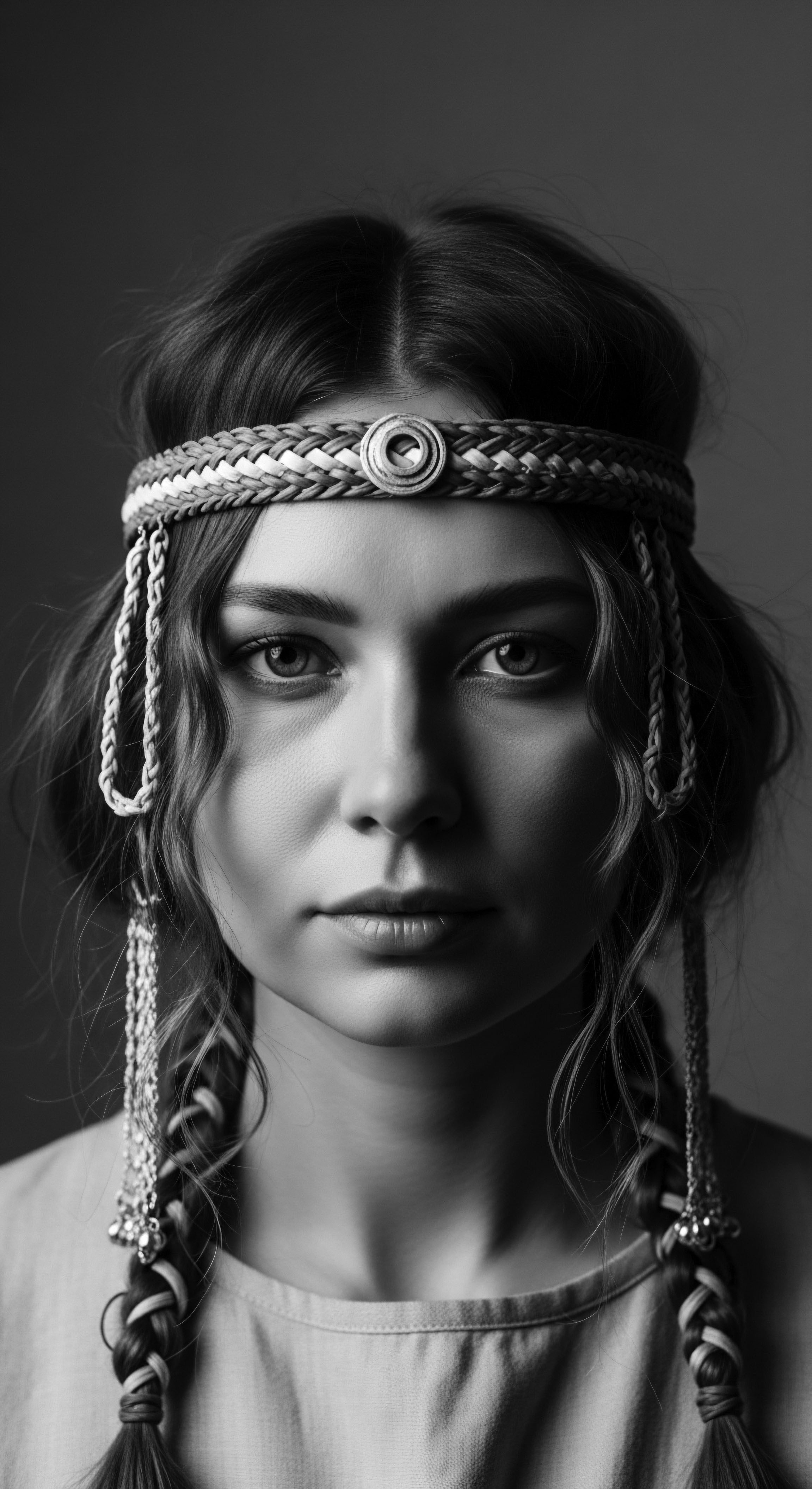
Growth Cycles and Earth’s Influence
Hair growth cycles, universal to all human beings, might manifest differently depending on hair structure and overall bodily wellness. Ancestral wisdom often linked physical vitality, diet, and environmental harmony directly to the health of hair. Traditional African care practices, for instance, frequently incorporated ingredients available from local flora, understanding their benefits for scalp health and hair strength long before modern nutritional science.
This holistic outlook saw hair health as an extension of one’s overall connection to the earth and its provisions. The use of natural butters, herbs, and powders to assist with moisture retention was common practice.
| Aspect of Hair Follicle Angle |
| Ancestral Heritage Knowledge Observed direct influence on curl pattern, informing styling choices. |
| Modern Scientific Understanding Microscopic analysis confirms elliptical follicle shape and acute angle for tighter curls. |
| Aspect of Hair Moisture Retention |
| Ancestral Heritage Knowledge Applied butters and oils to prevent dryness, recognized hair's porosity. |
| Modern Scientific Understanding Identified cuticle lifting at coil curves, leading to moisture loss; validated emollient benefits. |
| Aspect of Hair Protective Styling |
| Ancestral Heritage Knowledge Developed intricate braids and wraps for preservation and social meaning. |
| Modern Scientific Understanding Confirmed reduced manipulation and environmental shielding extend hair health. |
| Aspect of Hair Ingredient Sourcing |
| Ancestral Heritage Knowledge Used local plants and animal fats based on generations of efficacy. |
| Modern Scientific Understanding Analyzed compounds (e.g. fatty acids, vitamins) in traditional ingredients for specific hair benefits. |
| Aspect of Hair The enduring wisdom of heritage practices consistently aligns with contemporary findings on textured hair's biological needs. |
The foundations of understanding textured hair rest on this interplay ❉ the inherent biological design of the strand, the historical and cultural meanings ascribed to it, and the long-standing, often sophisticated, care practices born from generations of observation and tradition. Heritage knowledge provides not merely anecdotal methods, but a profound contextual framework that can profoundly shape our approach to hair health today.
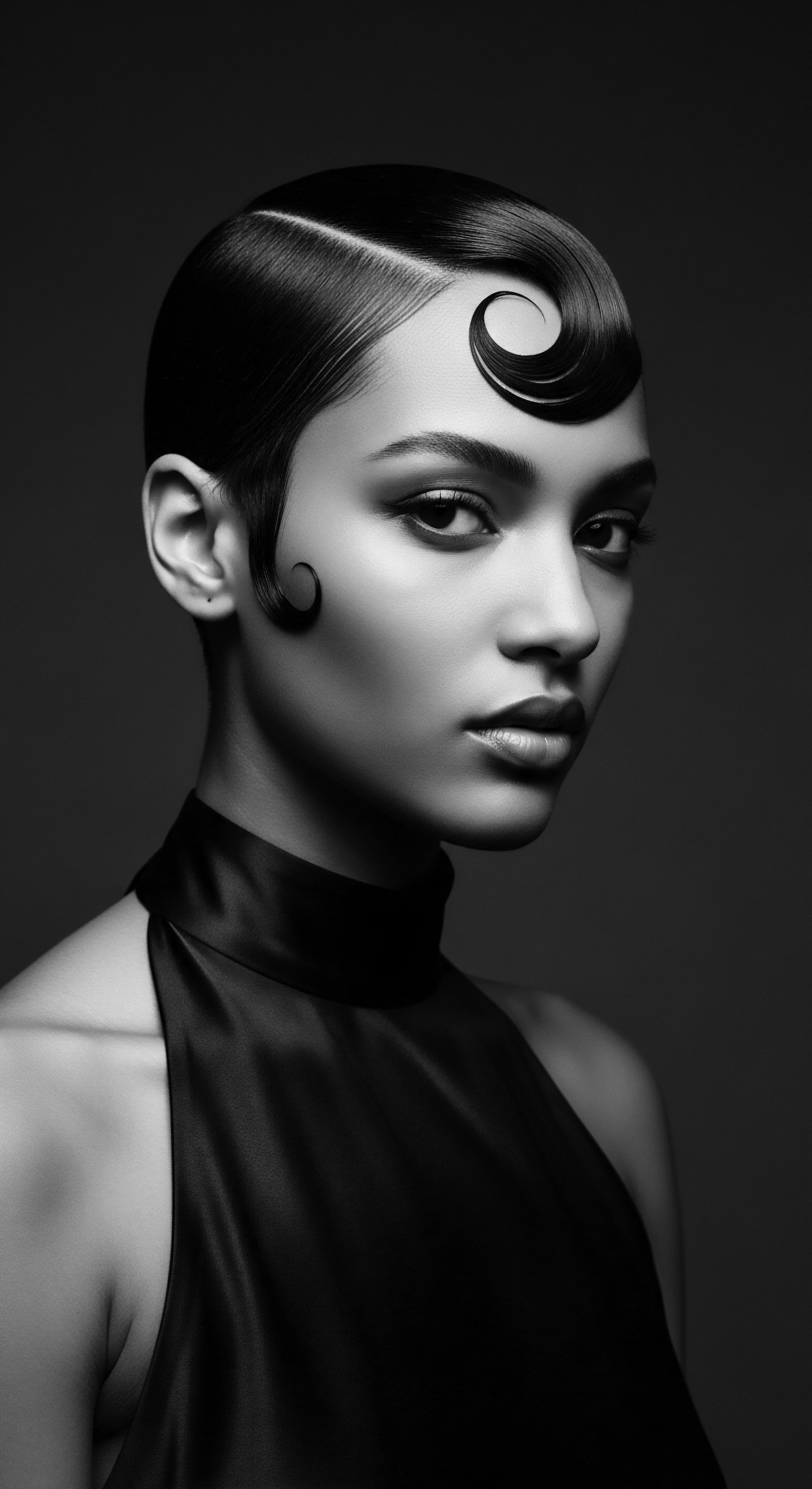
Ritual
The styling of textured hair has always been far more than a mere aesthetic pursuit; it is a ritual, a profound expression of identity, an act of community, and a quiet statement of resilience. From the earliest days of human existence, across the vast landscapes of Africa and into the diaspora, hands have transformed hair into art, into maps, into symbols of enduring spirit. The unique structure of textured hair, with its ability to hold intricate patterns and shapes, lent itself perfectly to these complex expressions, becoming a canvas for heritage.

Protective Styling Ancestry
Protective hairstyles, long before they were given a modern label, were foundational to hair care in African societies. Styles like cornrows, braids, and Bantu knots have roots tracing back thousands of years. For example, cornrows date back to at least 3000 BCE in parts of Africa, used to convey tribal identity, age, marital status, and social class.
These styles served not only for adornment but primarily to protect the hair from environmental elements, reduce manipulation, and retain moisture, directly addressing the intrinsic needs of textured hair. This heritage knowledge recognized that minimizing stress on the delicate coils preserved length and vitality.
Ancient protective styles, born from necessity and artistry, continue to offer blueprints for caring for textured hair.
During the transatlantic slave trade, when African people were forcibly uprooted and their cultural identities attacked, hair became a powerful, hidden language. Enslaved individuals, stripped of many traditions, continued to practice hair care as a quiet act of defiance and cultural preservation. Oral histories tell of how cornrows were intricately braided to conceal rice seeds, ensuring survival and the continuation of ancestral agricultural practices.
Furthermore, it is speculated that specific braid patterns functioned as maps to freedom, guiding escape routes from plantations. This extraordinary historical example powerfully illuminates how hair styling, directly linked to the unique structure of textured hair that could hold such complex patterns, became a vehicle for survival and resistance, proving heritage knowledge’s profound impact beyond superficial beauty.

Natural Styling and Heritage Techniques
The inherent versatility of textured hair allows for an array of natural styling techniques that celebrate its unique formation. Finger coiling, twisting, and braiding, practices honed over centuries, work with the natural curl pattern to define and hold shape without harsh chemicals or excessive heat. The wisdom of these techniques lies in their gentle approach, honoring the hair’s natural inclination.
For example, hair threading, known as “Irun Kiko” among the Yoruba people of Nigeria, was practiced as early as the 15th century to style and protect hair. This method of wrapping hair with thread preserves its length and can temporarily stretch the natural curl without heat.
The communal aspect of hair styling is a vital thread in this heritage. In many African cultures, hair care was, and remains, a social event, a time for bonding, storytelling, and the intergenerational transfer of wisdom. Mothers, aunts, and elders would share not only techniques but also the deeper cultural significance of each style and the ingredients used. This communal practice reinforced the understanding that hair care was an act of self-care and community care, intrinsically linked to identity.

Tools of the Ancestors
The tools used for textured hair care also bear the imprint of heritage. Long before mass-produced combs and brushes, ancient African communities crafted their own implements from materials like wood, bone, and ivory. The Afro comb , for instance, has been in use for over 5,500 years, with archaeological finds from Kush and Kemet (ancient Sudan and Egypt) revealing elaborately carved combs buried with their owners, symbolizing the sacredness of hair and its tools. These combs were not just functional; they were often engraved with symbols indicating tribal identity, rank, fertility, and protection.
The absence of appropriate tools and products during enslavement forced a different kind of innovation. Enslaved people learned to use whatever resources were available, from heated butter knives for straightening to pieces of cloth for headscarves, demonstrating enduring adaptability and a determination to maintain hair health despite immense hardship. The ingenuity born of this struggle further underscores the depth of hair heritage within the diaspora.

The Continuum of Care
While modern advancements offer new possibilities, the core principles of textured hair styling, rooted in heritage, prioritize moisture, protection, and respect for the natural curl. This continuum of care reminds us that our present-day routines are echoes of ancient rhythms, affirming that the unique structure of textured hair is profoundly supported by knowledge passed down through generations.
The adaptation of styling practices to new environments, from humid rainforests to arid deserts, also testifies to the dynamic nature of this heritage knowledge. Different regions developed distinct techniques and styles, all responding to the fundamental needs of textured hair in varying climates.
The enduring influence of these heritage styling rituals is visible today. Modern natural hair movements draw heavily from these traditional techniques, demonstrating that the best way to support the unique structure of textured hair is often by looking back at the ways our ancestors have always celebrated and cared for it.

Relay
The journey of textured hair care, from ancient practices to contemporary understanding, is a continuous relay, a passing of ancestral wisdom baton to new generations. This exploration seeks to demonstrate how heritage knowledge offers a profound framework for holistic care, nighttime rituals, and resolving hair concerns, all while acknowledging the distinct structure of textured hair. It bridges the chasm between time-honored methods and modern scientific insight, revealing that the past holds keys to the present and future of hair health.
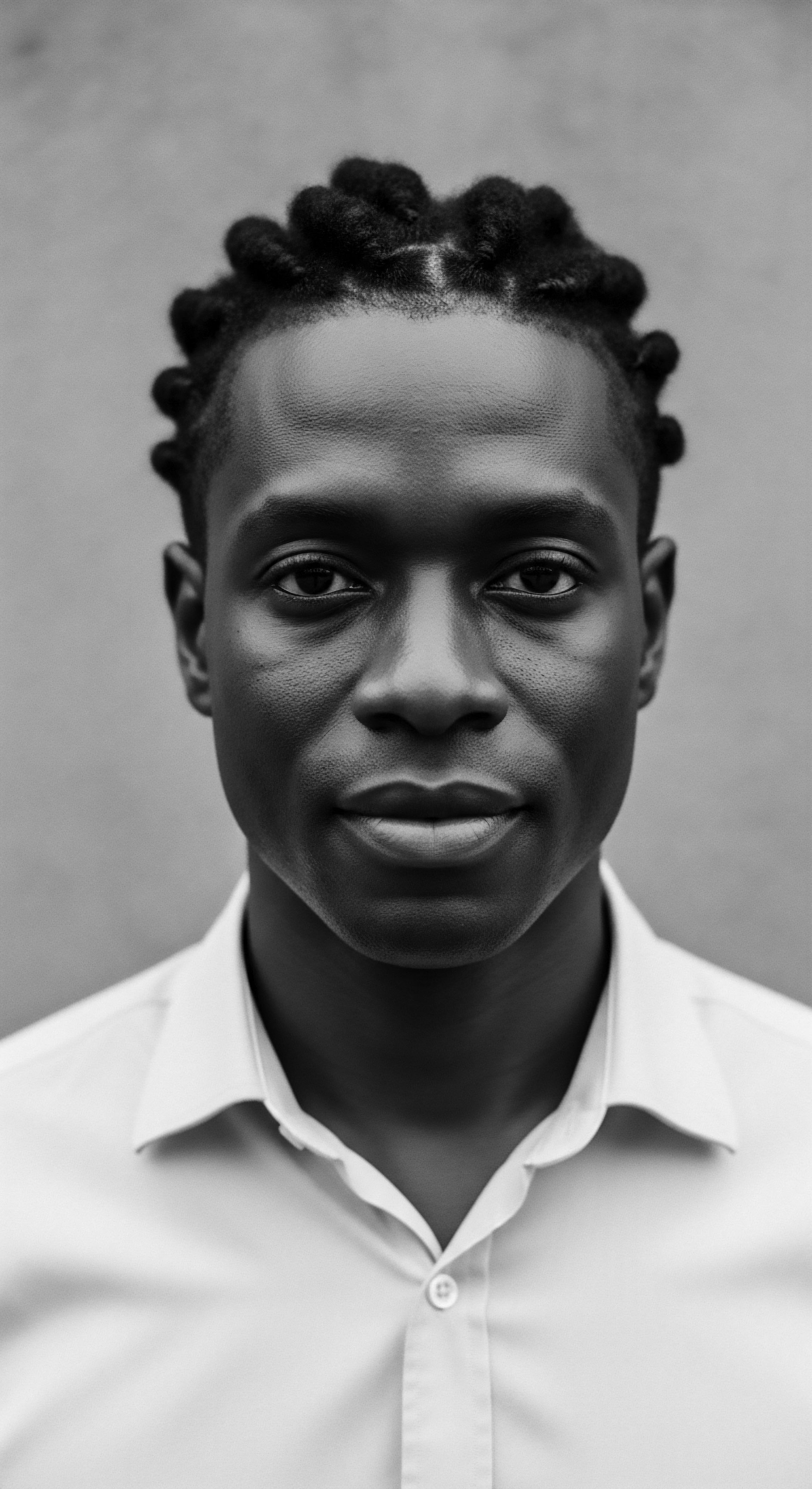
Ancestral Wisdom and Modern Hair Regimens
A truly personalized regimen for textured hair finds its strongest footing when grounded in ancestral wisdom. Across African cultures and diasporic communities, practices centered on deep hydration and protection were paramount for hair health. The biological characteristics of textured hair – its coiled structure, susceptibility to dryness, and propensity for breakage – were intuitively understood and addressed through daily and weekly rituals.
For instance, the consistent use of natural oils and butters for moisturizing the hair and scalp is a deeply rooted tradition. Shea butter, derived from the Vitellaria paradoxa tree native to West Africa, has been used for thousands of years as a hair treatment, with its use documented as far back as the 14th century. Scientific studies now corroborate its benefits ❉ a 2017 study on a seed oil with similar bioactive content to shea butter found it made hair more resistant to breakage.
Other research indicates shea butter’s emollient qualities aid in moisture retention and can reduce scalp irritation due to its anti-inflammatory properties. This scientific validation of a long-standing ancestral staple confirms the profound practical efficacy of heritage practices.
What specific ingredients from our ancestral past hold validated benefits for textured hair?
- Shea Butter ❉ A rich emollient that seals in moisture, reduces scalp dryness, and provides anti-inflammatory effects. Widely used in West Africa.
- Coconut Oil ❉ Known for its high moisture content and ability to penetrate the hair shaft, reducing protein loss and helping to combat dandruff. Used across various cultures, including African, Indian, and Latin American traditions.
- Aloe Vera ❉ Valued for its soothing properties, promoting hair growth, and reducing scalp inflammation due to saponins and other compounds. Found in African and Native American hair care.
- Chebe Powder ❉ Historically used by women of the Bassara/Baggara Arab tribe in Chad to promote length retention by sealing in moisture.
This tradition of using natural ingredients, often locally sourced, exemplifies a holistic approach to hair wellness, viewing hair as an integral part of the body’s overall vitality, a reflection of connection to the earth’s bounty.
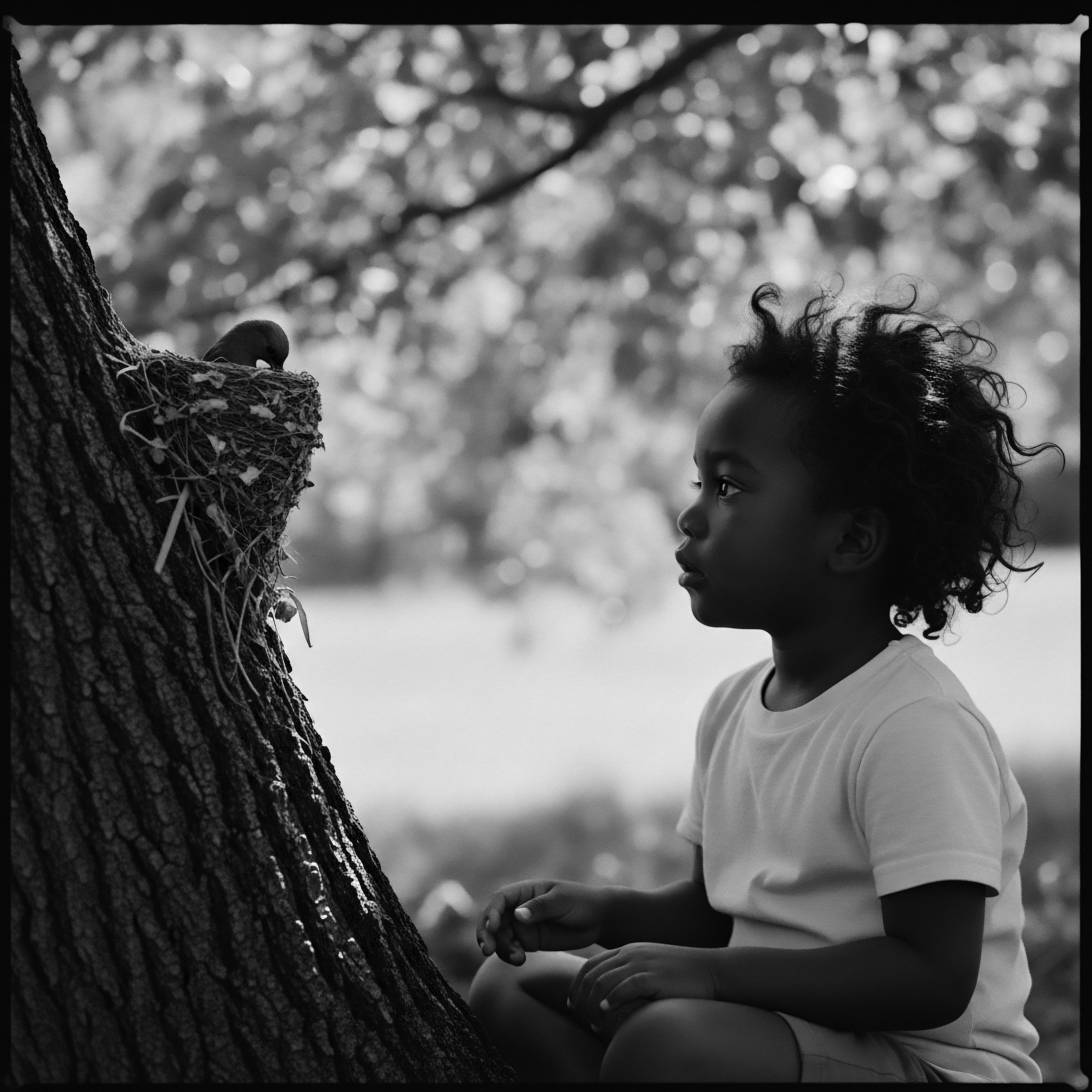
Night’s Embrace ❉ Sleep Protection and Bonnet Wisdom
The nighttime sanctuary, specifically the use of hair coverings, represents a cornerstone of heritage hair care for textured strands. The silk or satin bonnet, now a globally recognized accessory, has a history deeply intertwined with Black culture and centuries of resilience. While European women used bonnets for warmth and fashion in the 1800s, headwraps have been traditional attire in African countries for centuries, signaling wealth, ethnicity, and marital status.
During enslavement, headwraps and bonnets were weaponized, forced upon Black women as a symbol of subjugation and to visually distinguish them as enslaved. Yet, in a powerful act of resistance, Black women transformed these coverings into forms of creative and cultural expression, using beautiful fabrics and adornments. The practical purpose of preserving hairstyles and preventing friction-induced breakage while sleeping was always present, but the cultural and political weight of the bonnet grew immensely.
| Era/Context Ancient Africa |
| Cultural Significance Signified social status, ethnicity, and marital standing (as headwraps). |
| Functional Benefit for Textured Hair Protected hair from elements, maintained styles. |
| Era/Context Enslavement Period |
| Cultural Significance Imposed as a marker of subjugation; later reclaimed as an act of resistance and identity. |
| Functional Benefit for Textured Hair Concealed hair, protected from harsh labor conditions, helped retain moisture (often using rudimentary materials). |
| Era/Context Post-Emancipation to 20th Century |
| Cultural Significance Symbol of resilience, cultural expression, and dignity amidst discrimination. |
| Functional Benefit for Textured Hair Became an established tool for sustaining and protecting natural texture and styles overnight. |
| Era/Context Modern Day |
| Cultural Significance Celebrated as a symbol of Black identity, self-love, and practical hair wellness. |
| Functional Benefit for Textured Hair Minimizes friction, preserves moisture, prevents breakage, and extends the life of hairstyles. |
| Era/Context The bonnet's journey reflects an enduring legacy of resourcefulness and cultural affirmation, directly supporting the unique needs of textured hair across history. |
Today, scientific understanding validates the protective function of satin and silk bonnets ❉ these smooth fabrics reduce friction, minimizing tangling, frizz, and moisture loss, crucial for maintaining the health and definition of textured hair. The seemingly simple act of covering one’s hair at night is a practice imbued with centuries of cultural meaning and tangible benefits for hair structure.

Addressing Challenges with Shared Wisdom
The challenges faced by textured hair – dryness, breakage, and scalp concerns – were not new to our ancestors. Their problem-solving compendium was a living tradition, passed down through generations. Dry scalp, for instance, was addressed with moisturizing oils and butters, and practices such as scalp oiling (Shiro Abhyanga in Ayurvedic traditions, often with coconut, sesame, or castor oils) were common for stimulating blood flow and conditioning.
What practical applications does heritage offer for contemporary hair issues?
Consider the issue of breakage. Traditional protective styles, as mentioned, are directly aimed at reducing the manipulation that contributes to breakage. When textured hair is kept in styles like braids, twists, or cornrows, it experiences less daily stress, allowing for length retention. This wisdom, passed down from ancient African practices, directly supports the structural integrity of the hair.
Hair care rituals in African cultures often involved a gentle and mindful approach, emphasizing patience in detangling and styling. This mindful interaction with the hair, informed by the understanding of its delicate coiled structure, directly counters modern tendencies towards harsh treatments. The holistic influences on hair health, deeply rooted in ancestral wellness philosophies, positioned hair as a reflection of inner and outer harmony. A balanced diet, connection to community, and spiritual wellbeing were all seen as contributing to one’s overall radiance, including the vibrancy of hair.
The relay of heritage knowledge continues to inform and enrich modern hair care. By embracing the wisdom of those who came before us, we acknowledge that the unique structure of textured hair is not a modern discovery, but a continuous story, written in the strands, supported by practices that have withstood the test of time, and validated by the very science that seeks to understand its enduring strength.
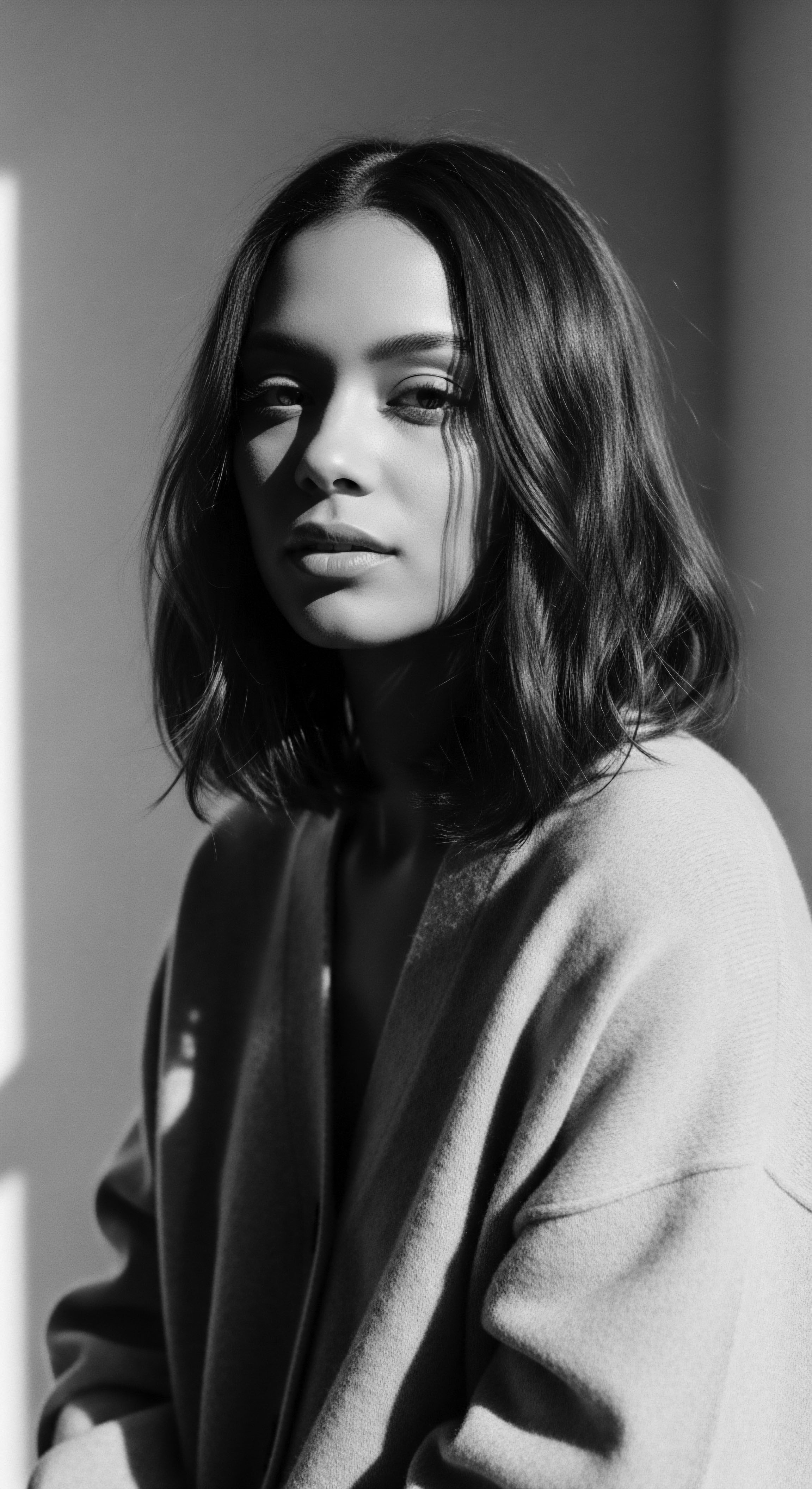
Reflection
As we conclude this exploration, the profound truth becomes clear ❉ the unique structure of textured hair finds its truest support not in fleeting trends or isolated scientific breakthroughs, but within the enduring legacy of heritage knowledge. Each coil and bend, a living testament to evolution and adaptation, echoes the wisdom of hands that have cared for these strands across continents and centuries. This is more than a discussion of biology; it is a meditation on identity, resilience, and connection.
Roothea’s ‘Soul of a Strand’ ethos finds its deepest expression in this understanding. It is a recognition that every hair journey is a segment of a much grander story, a narrative woven with ancestral practices, communal rituals, and acts of profound self-affirmation. The historical record, from ancient African reverence to the defiant beauty forged in the diaspora, consistently points to a holistic understanding of hair ❉ it is a crown, a communicator, a cultural archive.
The meticulous braiding, the application of natural oils, the communal gatherings for styling—these were not arbitrary acts. They were precise, informed responses to the very nature of textured hair, long before microscopes revealed its helical form.
Our contemporary understanding of textured hair’s specific needs—its demand for moisture, its vulnerability to tension, its protective capacities—is continuously validated and enriched by the practices passed down through generations. When we apply shea butter, we connect to ancient West African women. When we don a satin bonnet, we honor centuries of protective wisdom. When we embrace our natural textures, we join a chorus of voices reclaiming beauty and ancestral pride.
This is the living library of hair heritage ❉ not static texts, but a dynamic, breathing continuum of knowledge that invites us to listen, to learn, and to celebrate. The enduring power of textured hair, therefore, lies not just in its biological design, but in the boundless wisdom of its past, ready to guide its radiant future.

References
- Belibi, S. & Ark. S. (2009). Shea Butter as an Emollient for Eczema. Journal of Dermatological Treatment, 20(3), 162-166.
- Doran, C. R. (1990). Forest Magic cosmetics line ❉ The Philippines’ first Gugo shampoo. DOST’s Best in Use of Indigenous Materials Award.
- Hall, J. B. et al. (1996). Vitellaria paradoxa. PROSEA ❉ Plant Resources of South-East Asia.
- Hemat, R. A. (2003). Shea butter ❉ Properties and applications. Cosmetic Science and Technology, 25, 45-56.
- Hong, T. H. et al. (1996). Anti-inflammatory effect of shea butter. European Journal of Pharmacology, 310(2-3), 253-261.
- Nandini, T. et al. (2012). Histological study of normal skin treated with samples of shea butter. International Journal of Pharmaceutical and Biomedical Research, 3(4), 184-188.
- Nahm, N. (2011). The chemistry and skin care properties of shea butter. Journal of the American Oil Chemists’ Society, 88(12), 1957-1965.
- Omotos, A. (2018). Hair as a Symbol of Identity and Communication in Ancient African Civilizations. Journal of Pan African Studies, 11(7), 1-15.
- Rogers, R. & O’Lenick Jr. A. J. (2009). Fractionated Shea Butter for Enhanced Skin and Hair Moisturization. Journal of Cosmetic Science, 60(6), 661-667.
